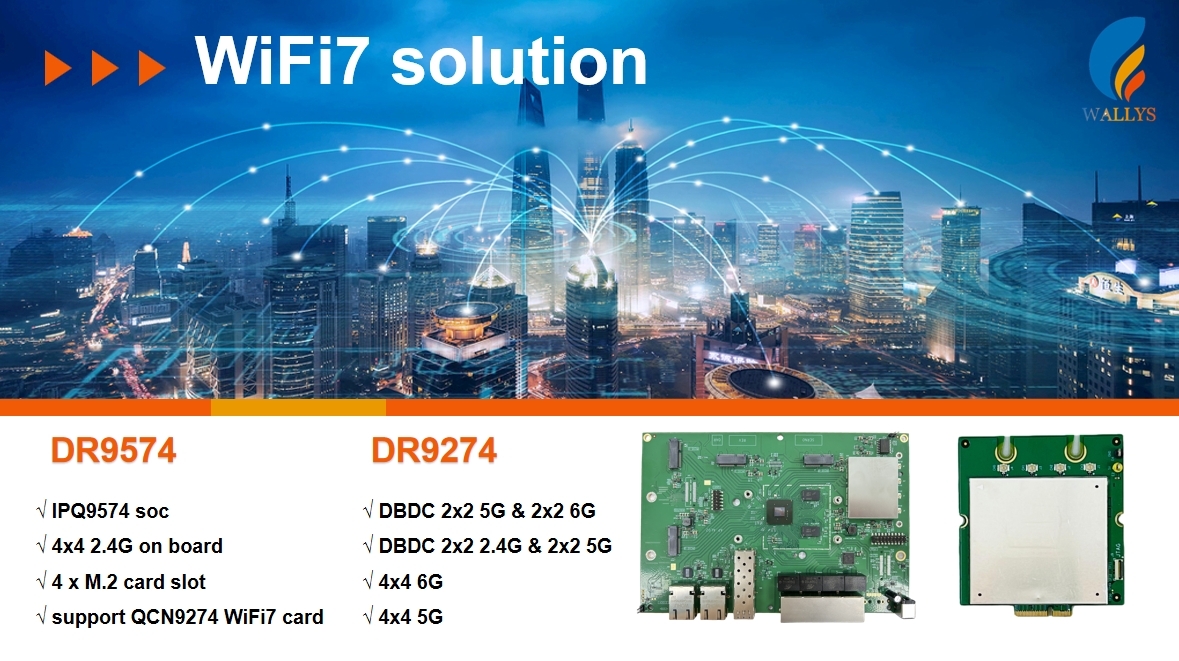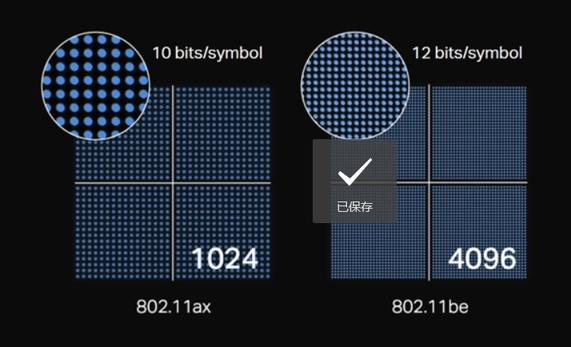IIOT WiFi7-IPQ9574/IPQ9554-QCN9274-QCN6274-4096-QAM, each Symbol carries 12bit information

Wi-Fi 7 solution provides users with a good experience of high-density access, stable and reliable mobile services, and a new experience of twin operation and maintenance, creating a new wireless experience with a high-speed, low-latency, future-oriented wireless network.
In the upgraded version of Wi-Fi 6, Wi-Fi 6E band is supported, and the latest Wi-Fi 7 is no exception.
Higher frequency bands can naturally bring faster transmission speeds. The Wi-Fi 7 channel bandwidth enabled by the 6G frequency band has been increased from 160MHz to 320MHz, and the number of effective subcarriers (which can be simply understood as units that can accommodate data) has reached 3920. That’s twice as fast as Wi-Fi 6, which only has 160MHz band blocks.
If 160MHz Wi-Fi 6 is compared to a two-lane road, then 320MHz Wi-Fi 7 is considered a four-lane road, and the number of cars that can run side by side at the same time is twice that of Wi-Fi 6.

The encoding method determines the number of bits that can be carried in a symbol. Wi-Fi 6 uses up to 1024-QAM modulation, and each Symbol carries 10 bit information. Wi-Fi 7 uses up to 4096-QAM modulation, and each Symbol carries 12bit information. The coding capability of Wi-Fi 7 is 1.2 times that of Wi-Fi 6, and the density of transmitted information is greater.
To use a simple example, compare the modulator to a truck. The Wi-Fi 7 truck can transport 12 boxes of goods at a time, while the Wi-Fi 6 can only transport 10 boxes.

The Industrial Internet of Things has higher performance requirements for WiFi. Usually WiFi solution OEM/OEM will use Qualcomm's solution. The main WiFi7 motherboard chip uses IPQ9574/IPQ9554. IPQ9574 is usually an industrial-grade application, and IPQ9554 is usually a commercial-grade application. , let’s take a look at their specific differences?
networking pro 1620: chip model IPQ9574, supports 16 data streams in 4 frequency bands, peak rate 33Gbps, supports 4 2.5G ports, 1 5G port, and 1 10G port;
networking pro 1220: chip model IPQ9574, supports 12 data streams in 3 frequency bands, peak rate 21Gbps, supports 4 2.5G ports, 1 5G port, and 1 10G port;
networking pro 820: chip model IPQ9574, supports 8 data streams in 4 frequency bands, peak rate 16Gbps, supports 4 2.5G ports, 1 5G port, and 1 10G port;
networking pro 620: chip model IPQ9554, supports 3 frequency bands and 6 streams, peak speed 10Gbps, supports 4 2.5G ports and 1 10G port;
DR9574 routerboard
802.11be IPQ9574 4x4 2.4G 2x10G +4x1G Ethernet Port
Support WIFI7 card QCN9274-QCN6274
DBDC 2x2 2.4G& 2x2 5G
DBDC 2x2 5G& 2x2 6G
4x4 5G
4X4 6G
Wallys software technology advantages:
Wallys has 10 years of experience in software development and is very experienced in uboot, Linux, wifi protocol, wifi performance, OS and other systems. It mainly uses Qualcomm chips to develop important software such as drivers and kernels, and has the ability to modify and compile to meet customers' different wifi functional requirements. Meanwhile, it participates in openwrt organization and code development. wifi5 product DR40x9 has been officially supported by openwrt.
Hardware technology advantages:
We have a strong hardware design team, and experienced people know that the most difficult part of hardware design is RF circuit design, baseband, etc., while wallys team made 0 error to achieve signal integrity, such as frequency conversion of network card, from 2.4G to 900M, which is a technological breakthrough.











评论